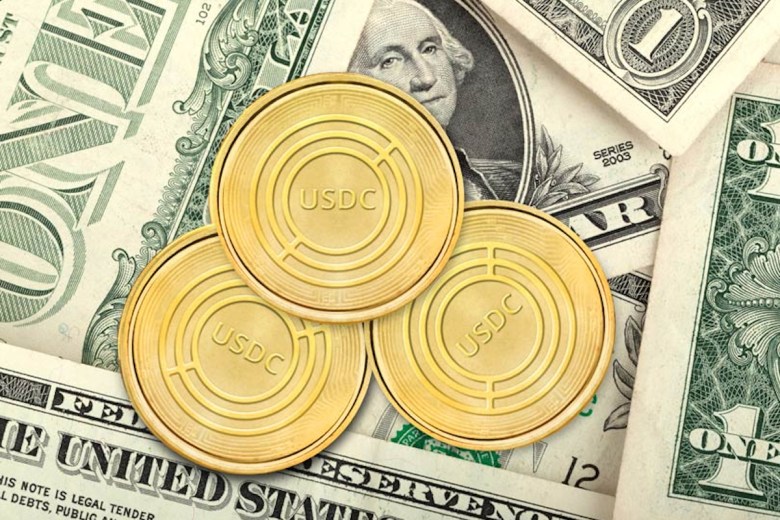Top Stories
Stablecoins Pose New Challenges for Global Financial Stability

The rise of stablecoins, a type of cryptocurrency designed to maintain a stable value, is raising concerns about their impact on the global financial system. While these digital assets are typically pegged to reliable assets like US Treasury securities, their rapid growth and connections to traditional finance have prompted warnings from financial authorities.
According to the International Monetary Fund (IMF), the stablecoin market, valued at approximately $305 billion, could disrupt traditional lending, challenge monetary policy effectiveness, and induce runs on safe assets. The IMF’s concerns highlight the risks associated with stablecoins, particularly given the backdrop of the US national debt surpassing $38 trillion and ongoing discussions about the future of the US dollar as the world’s reserve currency.
Stablecoins are designed to be less volatile than other cryptocurrencies, such as Bitcoin, because they are backed by traditional fiat currencies. However, their increasing integration with mainstream financial markets, including US Treasuries, has raised alarm among regulators. The IMF notes that if stablecoins face run risks, this could lead to fire sales of reserve assets, negatively impacting bank deposits and government securities markets.
The GENIUS Act, passed in July 2023, aims to provide a regulatory framework for digital tokens and is expected to further accelerate the stablecoin market. Recent collaborations among major financial institutions, including Deutsche Bank and Goldman Sachs, are exploring the issuance of a 1:1 reserve-backed digital currency. Additionally, Citigroup is working with nine European banks to establish a regulated euro-based stablecoin.
The IMF also raised concerns about the implications of stablecoins on central banks’ ability to manage economies effectively. As stablecoins gain traction, they may diminish the Federal Reserve’s ability to leverage monetary policy through the “multiplier effect.” A significant shift towards stablecoins could distort bond markets if investors favor cryptocurrencies over traditional assets, leading to potential instability.
Recent market events have underscored these concerns. For instance, Ethena, the third-largest stablecoin, recently lost its peg to the dollar, prompting fears of broader repercussions. Ashwanth Samuel, a researcher at the Massachusetts Institute of Technology (MIT), noted that a spike in redemptions during market stress could compel stablecoin issuers to sell Treasuries into a market that may not have sufficient buyers.
In the UK, the Bank of England is cautious about lifting limitations on stablecoins until it can ensure they do not jeopardize financing to the real economy. Deputy Governor Sarah Breeden emphasized the need for thorough assessments before any regulatory changes.
In the US, Federal Reserve Governor Michael Barr expressed concerns about the potential for increased risk if stablecoin issuers extend their investments into less secure assets. He highlighted that the stability of stablecoins relies on their ability to be redeemed at par across various market conditions, including times of stress.
The lessons from past financial crises, such as the 2008 collapse of the Reserve Primary Fund, which “broke the buck” following the bankruptcy of Lehman Brothers, illustrate the vulnerabilities of private money. Barr pointed out that even high-quality assets could be questioned in times of uncertainty, leading to runs on stablecoins.
Under the GENIUS Act, stablecoin issuers can use a broader range of underlying reserve assets, including cryptocurrencies like Bitcoin. This raises the risk that a sharp decline in the value of these assets could compromise the stability of stablecoins.
To enhance stability, Barr advocated for stringent controls over reserve assets, alongside necessary supervision and liquidity requirements. The absence of robust safeguards could expose users to heightened risks, particularly in volatile market conditions.
As policymakers continue to define the regulatory environment for stablecoins, crucial questions remain about their potential access to the Federal Reserve’s discount window and the structural protections needed to safeguard US Treasury markets.
A recent letter from financial institutions, including the Bank Policy Institute and the Consumer Bankers Association, warned that yield-bearing stablecoins could siphon as much as $6.6 trillion from traditional banks, potentially increasing interest rates and limiting loan availability.
Experts like Christian Catalini from MIT argue that while decentralizing technologies have potential, the economic realities of scale and brand power may ultimately lead to concentration among stablecoin issuers. This could undermine the interoperability that digital assets promise.
Despite these concerns, some US officials are optimistic. Jonathan Gould, head of the Office of the Comptroller of the Currency, indicated readiness to act if significant capital shifts from banks occur. He noted that stablecoin connectivity could provide community banks with opportunities to compete more effectively against larger institutions.
However, former Consumer Financial Protection Bureau economist Andrew Nigrinis countered this optimism, emphasizing that the risks associated with concentrated deposits in stablecoin issuers could present more significant vulnerabilities than traditional banking deposits. The rapid and unpredictable nature of stablecoin-linked funds, coupled with their potential inability to support lending, distinguishes them from stable, credit-supportive deposits that serve local economies.
The emergence of stablecoins presents a complex challenge for global financial stability. As the market continues to evolve, the balance between innovation and regulation will be critical in ensuring a secure financial future.
-

 Lifestyle5 months ago
Lifestyle5 months agoHumanism Camp Engages 250 Youths in Summer Fest 2025
-

 Business5 months ago
Business5 months agoKenvue Dismisses CEO Thibaut Mongon as Strategic Review Advances
-

 Sports5 months ago
Sports5 months agoDe Minaur Triumphs at Washington Open After Thrilling Comeback
-

 Sports5 months ago
Sports5 months agoTupou and Daugunu Join First Nations Squad for Lions Clash
-

 Top Stories5 months ago
Top Stories5 months agoColombian Senator Miguel Uribe Shows Signs of Recovery After Attack
-

 World3 months ago
World3 months agoSouth Korea’s Foreign Minister Cho Hyun to Visit China This Week
-

 World5 months ago
World5 months agoASEAN Gears Up for Historic Joint Meeting of Foreign and Economic Ministers
-

 Health5 months ago
Health5 months agoNew Study Challenges Assumptions About Aging and Inflammation
-

 Business5 months ago
Business5 months agoOil Prices Surge Following New EU Sanctions on Russia
-

 Business3 months ago
Business3 months agoStarling Bank Plans Secondary Share Sale, Targeting $5.4 Billion Valuation
-

 Entertainment5 months ago
Entertainment5 months agoDetaşe-Sabah Violin Ensemble Captivates at Gabala Music Festival
-

 Entertainment5 months ago
Entertainment5 months agoBaku Metro Extends Hours for Justin Timberlake Concert









